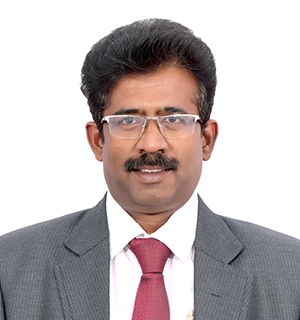To achievedurability and sustainability in constructions, it is important that we startby using and adopting eco-friendly alternative materials, writes Dr. L R Manjunatha.
“Sustainability is acombination of minimizing environmental impact and economic cost to achieve therequired social performance. Sustainable development is the development thatmeets the needs of the present without compromising on the needs of the futuregenerations.”

-
Dr. L RManjunatha, Associate Vice President – JSW Cement Limited, andHonorary Chairperson, Indian Concrete Institute, Bangalore Centre.
India is on the threshold of huge infrastructure development.Over the next few years, the country would see world class infrastructure in termsof Highways, advanced railways, ports, Airports, metro projects, Housing , Bharathmalaand Sagarmala projects, all taking shape.
India will become the world’s third largest construction marketby the year 2022-23 and would require an investment of close to US$770-$800-billionfor a continuous sustainable development. For this kind of constructiondevelopment to successfully happen, we need billions of tonnes of constructionmaterials, such as steel, cement, aggregates, water, finishing materials, etc.,and, at the same time, there is a need for making the constructions durable andsustainable.
AConcrete Need
Concrete is the second most consumed material on this planetafter water. Production of cement, which is the main binding material inconcrete production, and production of cement is not at all an eco-friendlyactivity due to the release of greenhouse gases like CO2 to theatmosphere. Moreover, cement production consumes a lot of resources, such as:
Also, many hazards are associated with theproduction of ordinary Portland cement and, at every stage of its production, theenvironment is affected in one way or another, like:
It is pertinent to note that Portland cementproduction accounts for 5.0 per cent of global CO2 emissions. Asper the latest estimates, Cement production across the globe is about 4.1billion MT and emits about 2.7 billion MT of the total CO2 emissions,accounting to 5.0 per cent of the total CO2 emissions, making Indiathe third largest emitter of CO2, after China and USA.
India is the second largest producer of cement in the world witha current installed capacity of close to 550 MTPA and consumption close to 400MTPA. The manufacture ofenvironment-friendly engineering materials, such as concrete, requiresreduction in the use of virgin raw materials like cement, natural aggregates, energy,waste disposal, and greenhouse gases, and increased use of sustainablealternative materials which are eco-friendly.
Theenvironmental sustainability of the concrete production can be enhanced by useof process industry by-products – like Fly ash from the power generatingthermal plants, and slags from the steel industry – as partial cementreplacements in the manufacture of blended cements and Ready Mixed Concrete atconcrete batching plants. Developing and producing durable and sustainableconcretes in present scenario is a step towards green and eco-friendly concreteconstruction practices to solve the global environmental concerns.
Due to growthin the Indian population, the demand for concrete structures has alsoincreased, due to which concrete is used substantially in large amounts. Consideringthe large amounts of concrete used for the construction activities, it becomesimportant to assess its impact on the environment and its carbon footprint.
In order toassess the impact of the concrete on the environment, the following steps mustbe considered:
-
Manufacture of concrete.
-
Placing of concrete.
-
Durability of concrete.
-
Recycling of concrete.
It isimportant to consider all the above-mentioned processes as all the stages playa vital role in the utilization of the energy, contribute to the emission ofcarbon dioxide, increase in the landfill areas, depletion of the raw materials,and many such ecological issues.
Steps to increase durability andsustainability in concrete constructions
Sustainability is acombination of minimizing environmental impact and economic cost to achieve therequired social performance. Sustainable development is the development that meetsthe needs of the present without compromising on the needs of the futuregenerations.
Sustainable Construction is the “practiceof creating structures and using processes that are environmentally responsibleand resource-efficient throughout a building'slife-cycle – from siting to design, construction,operation, maintenance, renovation, and demolition”. The sustainability cycletalks about viable, bearable, and equitable solutions for achieving social,environmental, and economic benefits for the society using eco-friendlysolutions, which help in loweringCO2 emissions, lowering energy consumption, and prolonging life ofstructures.
Adopting Global technologies for finding Localsolutions